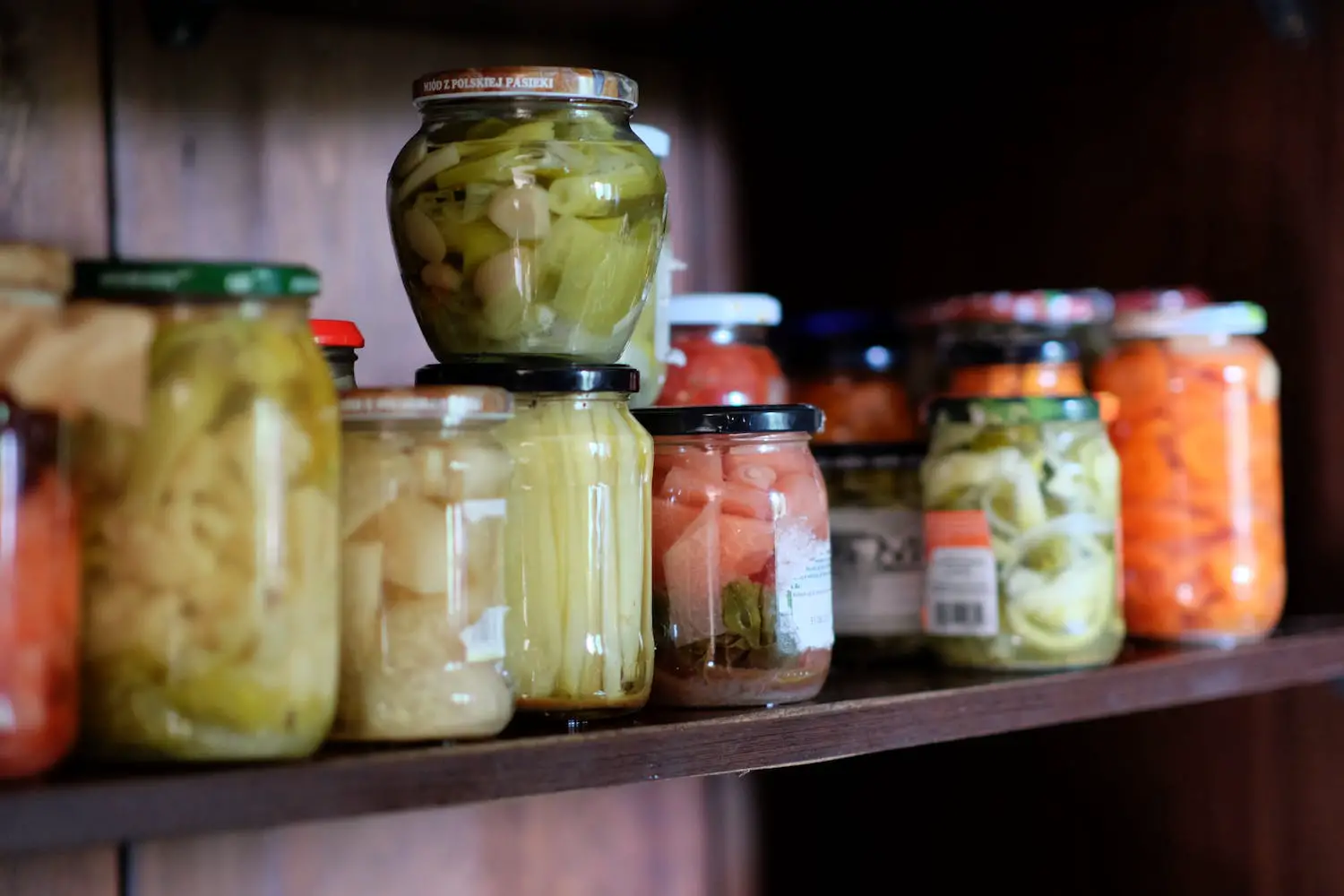Proper food storage isn’t just a matter of organization; it’s critical to maintaining health and safety in your kitchen and pantry. Incorrect storage can lead to food spoilage, waste, and even foodborne illnesses. By following these essential tips, you can ensure your food remains fresh, your meals taste great, and your home stays safe from potential hazards.
Read on to learn the nine tips for keeping your kitchen and pantry safe.
1. Understand Critical Control Points In Food Storage
In food safety, the concept of Critical Control Points (CCPs) is paramount. CCPs represent specific stages within the food production and storage lifecycle where potential hazards can be controlled or completely eradicated. This approach is integral to preventing foodborne illnesses and ensuring food quality from production to consumption.
However, for comprehensive insights into CCPs within food production, consider the guidance offered by reputable companies online like TDI Packsys. Their expertise sheds light on identifying and managing these pivotal steps, ensuring food safety from production to plate.
2. Invest In Proper Refrigeration And Freezing
Ensuring proper refrigeration and freezing is a cornerstone of food safety and preservation. Effective temperature control is essential for inhibiting the growth of harmful bacteria and ensuring that perishable items remain safe for consumption. Key strategies include:
- Temperature Control: Keep your refrigerator’s temperature below 40°F and your freezer’s temperature at 0°F to prevent the proliferation of bacteria.
- Prompt Refrigeration: Always refrigerate or freeze perishables, prepared dishes, and leftovers within two hours after buying or preparing them to minimize the risk of bacterial contamination.
Adhering to these practices can help extend your food’s shelf life and contribute to your household’s overall health and safety.
3. Store Dry Goods In A Dark Place
Properly storing dry goods is vital for maintaining their quality and extending their shelf life. By adhering to a few key principles, you can ensure that grains, flour, nuts, and spices remain fresh and free from contamination. These principles include:
- Airtight Containers: Use containers that seal tightly to protect your dry goods from moisture and pests that can degrade their quality quickly.
- Cool, Dark Locations: Store your pantry goods in areas away from direct sunlight and heat sources. A cool, dark environment helps preserve the integrity of dry goods and prevents the loss of flavor and texture due to heat and light exposure.
Implementing these storage solutions can help prevent spoilage and ensure your pantry staples are always ready for use.

4. Separate Fruits And Vegetables And Ensure Adequate Ventilation
Understanding their storage needs is crucial to maximize the freshness and longevity of fruits and vegetables. For instance, ethylene gas, produced by certain fruits, can accelerate ripening and spoilage in sensitive produce. Here are key strategies to mitigate this:
- Ethylene Producers And Sensitive Items: Keep fruits that emit ethylene gas, like apples and bananas, separate from ethylene-sensitive vegetables and fruits. This separation helps prevent sensitive produce from ripening too quickly.
- Ventilation: Ensure that all produce, particularly those susceptible to ethylene, is stored in a way that promotes good air circulation. Use original packaging or ventilated plastic bags to minimize moisture buildup and the risk of mold or spoilage.
By adopting these practices, you can significantly extend the edible life of your produce, reducing waste and maintaining nutritional value.
5. Avoid Cross-Contamination Of Meat, Poultry, And Seafood
Ensuring the safety of meat, poultry, and seafood is crucial to prevent foodborne illnesses. Cross-contamination can occur when these items come into contact with other foods, surfaces, or utensils. To mitigate this risk, consider the following practices:
- Separate Storage: Allocate a specific area in your refrigerator for meat, poultry, and seafood, ideally on the lowest shelf. This prevents juices from dripping onto other foods, which could lead to cross-contamination.
- Use Quickly Or Freeze: Plan to use or freeze these items within a few days after purchase. This maintains freshness and reduces the risk of bacterial growth and contamination.
Adhering to these guidelines helps maintain a safe kitchen environment and protects your health.
6. Consider Proper Labeling And Rotation
Proper labeling and rotation of food items are key components of effective kitchen management. These practices help minimize waste and ensure the consumption of food at its peak quality:
- Date Labels: It’s important to mark containers and packages with the purchase or storage date. This enables easy tracking of storage duration, ensuring older items are used first.
- FIFO Method: The First In, First Out (FIFO) principle is a systematic way to manage food inventory. Placing newer items behind older ones ensures first use of the oldest stock, reducing spoilage.
Incorporating these strategies into your kitchen routine can significantly enhance food safety and efficiency.
7. Keep Storage Areas Safe
Maintaining cleanliness in food storage areas is essential for ensuring a safe and hygienic kitchen environment. Regular attention to these spaces can prevent the proliferation of harmful pathogens and extend the shelf life of stored items. Some practices to help keep storage areas safe include:
- Clean Regularly: Regularly clean refrigerators, freezers, and pantry shelves to remove spills and residues. This practice helps thwart the development of bacteria and mold, which can compromise food safety.
- Check Dates: Periodically review the expiration dates on all stored items. Discard expired or spoiled foods to prevent cross-contamination and protect the quality and safety of other foods.
Adopting these habits ensures your storage areas remain conducive to preserving the integrity of your food supplies.
8. Consider Smart Use Of Technology
Embracing modern technology can significantly enhance food preservation and safety in your kitchen. Innovative solutions offer convenience and efficiency, ensuring your food remains fresh for longer periods. Some options include:
- Smart Appliances: Modern smart refrigerators are designed to keep track of internal conditions such as temperature and humidity, offering alerts for maintenance or restocking needs. They can remind you to consume items before expiration, reducing waste and ensuring food quality.
- Vacuum Sealing: The vacuum sealing technique involves removing air from the packaging of food items, which plays a key role in minimizing oxidation and bacterial growth. This method can considerably extend the shelf life of a wide range of foods, from meats to vegetables, by preserving their freshness and nutritional value.
Adding these technological advancements into your kitchen practices can revolutionize how you store and manage your food supplies.
9. Educate Household Members
Educating household members on food safety is crucial for maintaining a healthy living environment. By sharing knowledge and best practices, everyone can contribute to preventing foodborne illnesses and ensuring the longevity of food supplies. Some practices include:
- Safe Food Handling Practices: Instruct all household members on food safety fundamentals, including thorough hand and produce washing, proper cooking temperatures, and safe preparation techniques. This foundation is essential for minimizing the risk of contamination.
- Shared Knowledge: Cultivate a culture of awareness regarding the significance of proper food storage, labeling, and the rotation of food items. When everyone understands and participates, these practices significantly enhance kitchen and pantry safety and efficiency.
Engaging the entire household in these practices fosters a collective responsibility toward food safety, promoting a healthier home environment.
Wrapping Up
Proper food storage is a multifaceted practice that requires diligence, knowledge, and a commitment to safety. By understanding and applying these tips, you can significantly reduce the risk of foodborne illnesses, minimize waste, and enjoy fresher, tastier meals. Food safety starts with you, and every step taken towards proper storage is a step towards a healthier, safer home.
